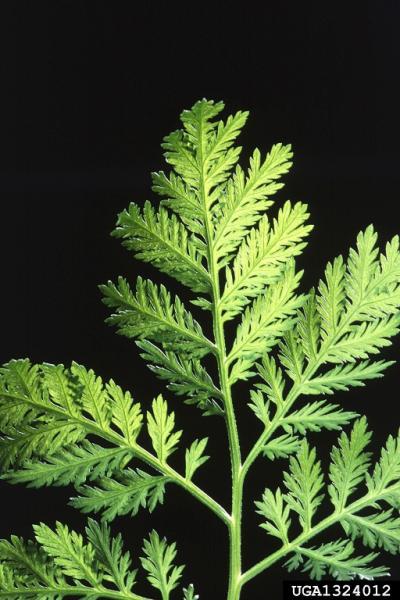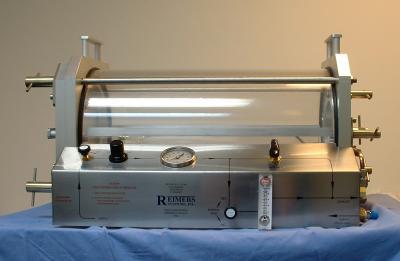A technique Michael Jackson reportedly used to prolong his youth is showing promise as a way to boost the effectiveness of a natural cancer remedy.
An environment of pure oxygen at three-and-a-half times normal air pressure adds significantly to the effectiveness of a natural compound already shown to kill cancerous cells, researchers at the University of Washington and Washington State University recently reported in the journal Anticancer Research.
The compound artemisinin – isolated from Artemisia annua L, commonly known as wormwood – is a natural remedy widely used to treat malaria. In the mid-1990s UW researchers were the first to explore its ability to treat cancer.
In the new study, using artemisinin or high-pressure oxygen alone on a culture of human leukemia cells reduced the cancer cells' growth by 15 percent. Using them in combination reduced the cells' growth by 38 percent, a 50 percent increase in artemisinin's effectiveness.
"If you combine high-pressure oxygen with artemisinin you can get a much better curing effect," said author Henry Lai, a UW research professor of bioengineering. "We only measured up to 48 hours. Over longer time periods we expect the synergistic effects to be even more dramatic."
The history of artemisinin brings to mind an Indiana Jones story. In the early 1970s, Lai says, Chinese leader Mao Zedong issued an order to develop an anti-malarial treatment. At the same time, a farmer in central China discovered a 2,000-year-old tomb that contained three coffins. One coffin contained a silk scroll describing various prescriptions, including artemisinin to treat malaria. The Chinese followed the directions and thus rediscovered an ancient remedy.
Today, artemisinin is widely used in Asia and Africa for malaria treatment.
In the decades since, scientists have discovered artemisinin reacts with iron within a cell to form a free radical, a highly reactive charged particle that destroys the cell. Because the malaria parasite is high in iron, artemisinin targets malaria-infected cells.

Annual wormwood, Artemisia annua L., yields the important antimalarial drug artemisinin. Researchers at the UW are exploring its ability to treat cancer.
(Photo Credit: Scott Bauer, USDA Agricultural Research Service, Bugwood.org)
Since rapidly dividing cancer cells also need iron to form new DNA, Lai theorized they would also make targets for artemisinin. Subsequent research showed this to be the case.
Lai and colleagues at the UW developed a variant several thousand times more potent than natural artemisinin, which was licensed in 2004 to a Chinese company.
"Artemisinin is a promising low-cost cancer treatment because it's specific, it's cheap and you don't have to inject it," Lai said. "It's 100 times more specific than traditional chemotherapy," he added. "In breast cancer, it's even better."
Lai says he's long hypothesized that high oxygen levels would enhance artemisinin's effects, because oxygen promotes the formation of free radicals. In 2010, he put the theory to the test in a hyperbaric chamber that co-author Raymond Quock, WSU professor and chair of pharmaceutical sciences, has been using to study highly pressurized oxygen's ability to relieve pain.
Hyperbaric chambers, filled with oxygen at high pressure, help scuba divers who surface too quickly gradually readjust to normal oxygen levels.
A photo of pop singer Jackson in the mid-80s sleeping in a portable hyperbaric chamber sparked rumors that he was trying to heal scars from plastic surgery, retain his youthful appearance or extend his lifespan. The photo turned out to be a publicity stunt, but the U.S. Food and Drug Administration has approved hyperbaric oxygen therapy for several ailments, including decompression sickness, carbon-monoxide poisoning, Lyme disease and slow-to-heal wounds.
In clinical practice, the artemisinin-hyperbaric study could lead to people or animals spending time in a hyperbaric chamber to enhance the artemisinin's effectiveness.

A Petri dish with human cancer cells was placed in this high-pressure oxygen chamber for 48 hours.
(Photo Credit: Reimer Systems, Inc.)
Source: University of Washington